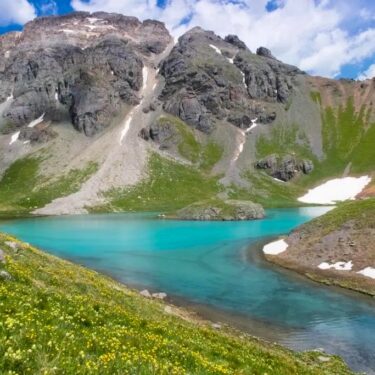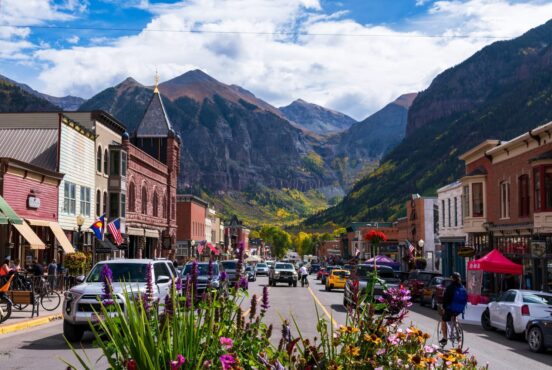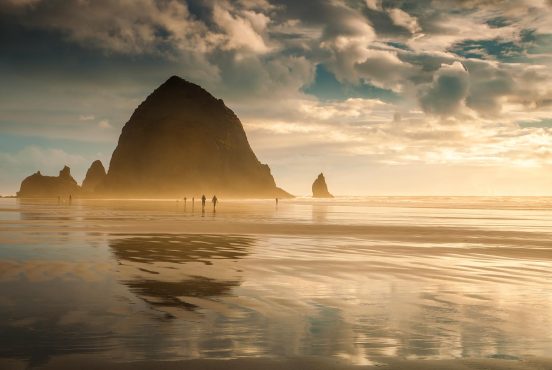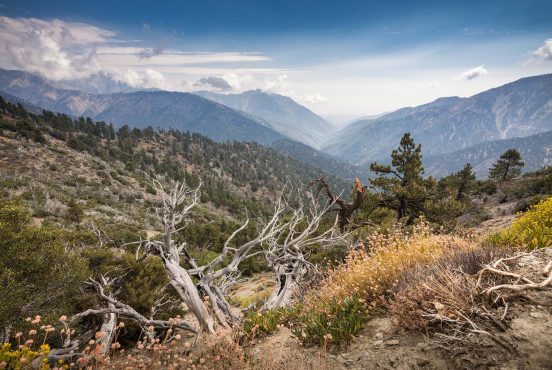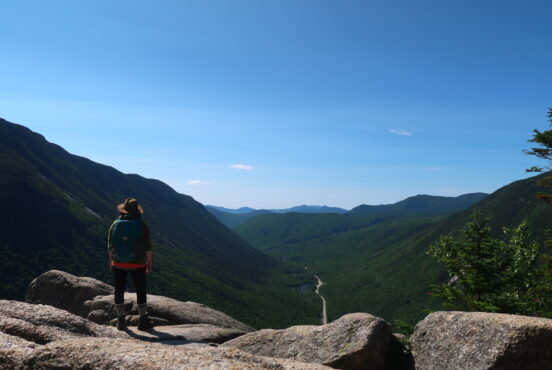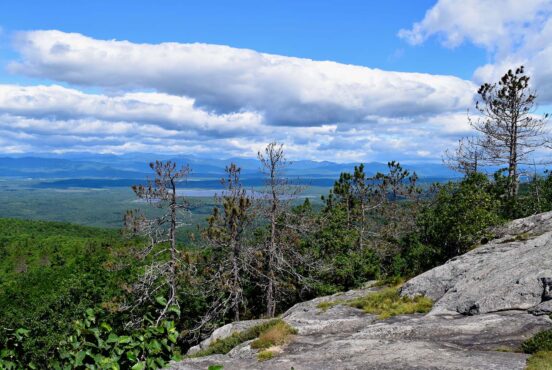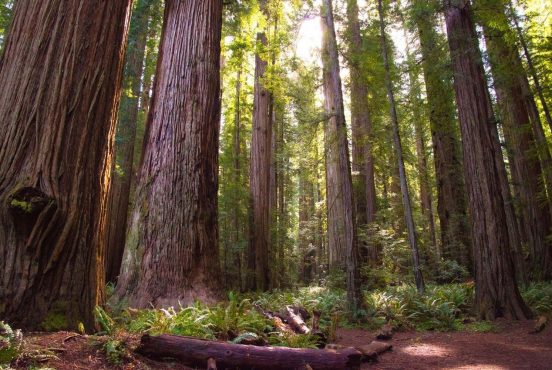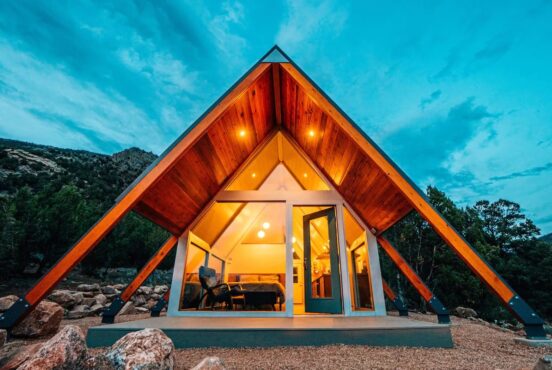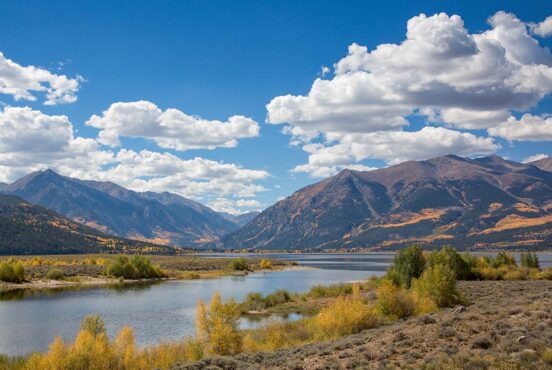Home to some of the country’s best ski resorts, come winter, it’s easy to forget that Colorado is still a great place to go for a hike.
Despite the huge mountains, snowfall, and chilly air, winter is a great time to get out and explore the state. The landscapes and visuals change greatly between summer and winter, and you’ll be left awed by the beauty of blankets of snow covering the scenery.
The biggest risk for winter hikers in Colorado is a lack of preparation. Winter poses challenges you don’t have to worry about in the summertime, including avalanches, slippery terrain, and hypothermia. Make sure you understand the terrain you’re moving through and how to navigate (and avoid) avalanche conditions. Taking an avalanche awareness class can be helpful.
For most winter hiking in Colorado, you’ll be fine with a pair of microspikes. But after a big snowfall, you may appreciate a pair of snowshoes. However, a few the hikes below should only be attempted with the proper gear (such as crampons and an ice ax), plus the knowledge of how to use them. Bring plenty of warm clothing, food, and water on your hike. Remember that you’ll burn calories faster if you’re cold, so you’ll probably need more food than you’d carry for a fair-weather hike.
The list below offers a variety of winter hikes in Colorado to give you a taste of what the state has to offer, but it’s by no means a comprehensive list. Remember to always Leave No Trace when hiking — the rules don’t change just because it’s winter.
Related Read: 7 Gorgeous Winter Camping Spots in Colorado
1. Paint Mines Interpretive Park
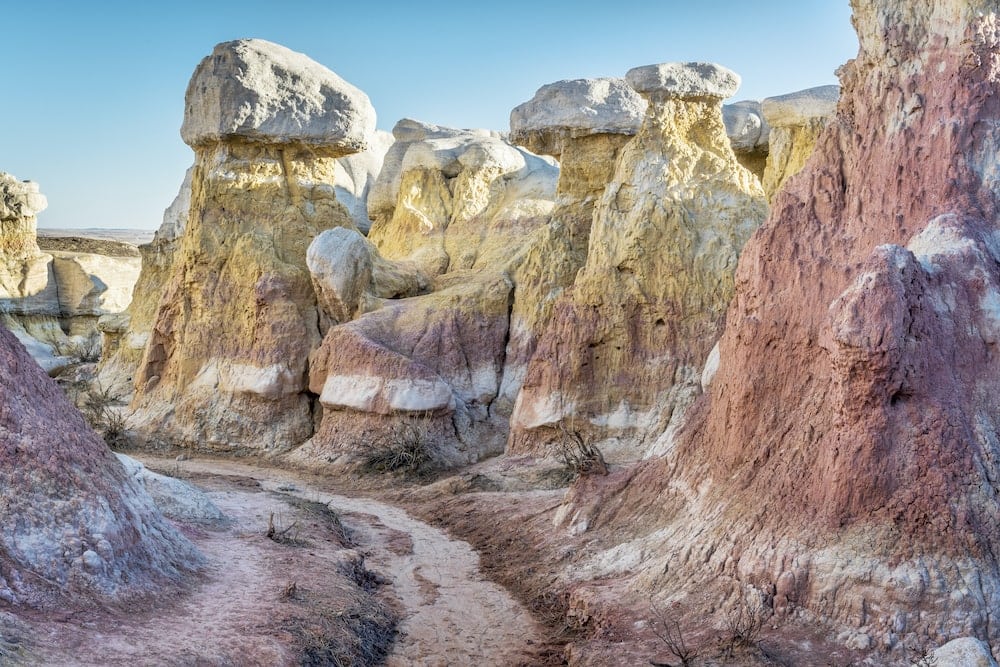
Why you should go: The multi-colored rocks of the Paint Mines add an unexpected vibrance to a beautiful hike
- Nearest town: Calhan
- Distance: 4.3 miles
- Difficulty: Easy
- Elevation gain: 380 feet
With most of the mountain action to the west of Denver, you may not expect to find such a cool landscape to the east. But the Paint Mines Interpretive Park is one spot to hit up if you’re looking for something different.
Named for the multi-colored clays used by Native Americans to make paint, a trip through the hoodoos is an enriching and colorful experience. You can connect a few different trail in the park for an extremely colorful day out — literally — and there are several interpretive sites along the way on the geology, history, and pre-history of the region.
Related Read: 7 Beautiful Hikes Near Red Rocks Amphitheatre, Colorado
2. Emerald Lake to Bear Lake
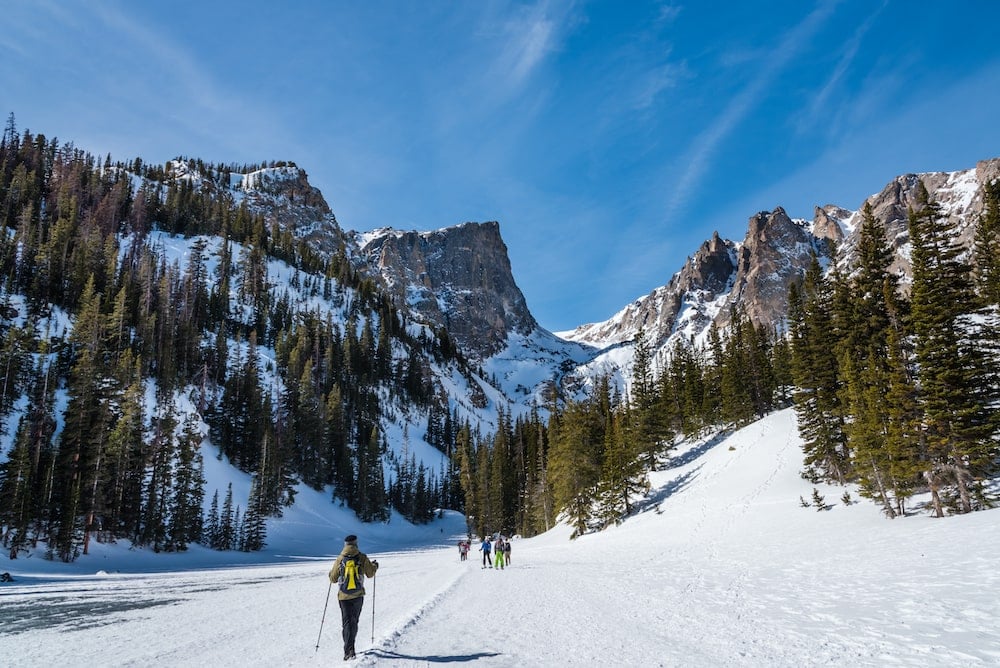
Why you should go: High-alpine trek through Rocky Mountain National Park (without the crowds).
- Nearest town: Estes Park
- Distance: 4.1 miles
- Difficulty: Intermediate
- Elevation gain: 740 feet
Though it’s a dream to visit in the summer, Rocky Mountain is also an amazing place to experience winter hiking in Colorado. It’s easy to get out on your own to explore the trails, but you can also take a winter hike guided by a park ranger.
A wonderful intro hike is Emerald Lake from Bear Lake trailhead. This route passes Bear Lake, Nymph Lake, and Dream Lake and ends at Emerald Lake. The forest landscape and views of the rocky walls above along the way are stunning and you can do it on foot or on snowshoes, depending on recent snowfall.
For a more rugged option, pack your crampons and ice ax and tackle the 8.2-mile round trip trek to Chasm Lake. It’s remote and strenuous, with 2,800 feet of gain. It’s best done with a friend so you can take turns spotting each other while crossing the snowfield. That said, standing on the icy Chasm Lake and looking up at the Diamond of Longs Peak is an incredibly rewarding experience.
Related Read: Traveler’s Guide to the Best Colorado National Parks
3. Saint Mary’s Glacier
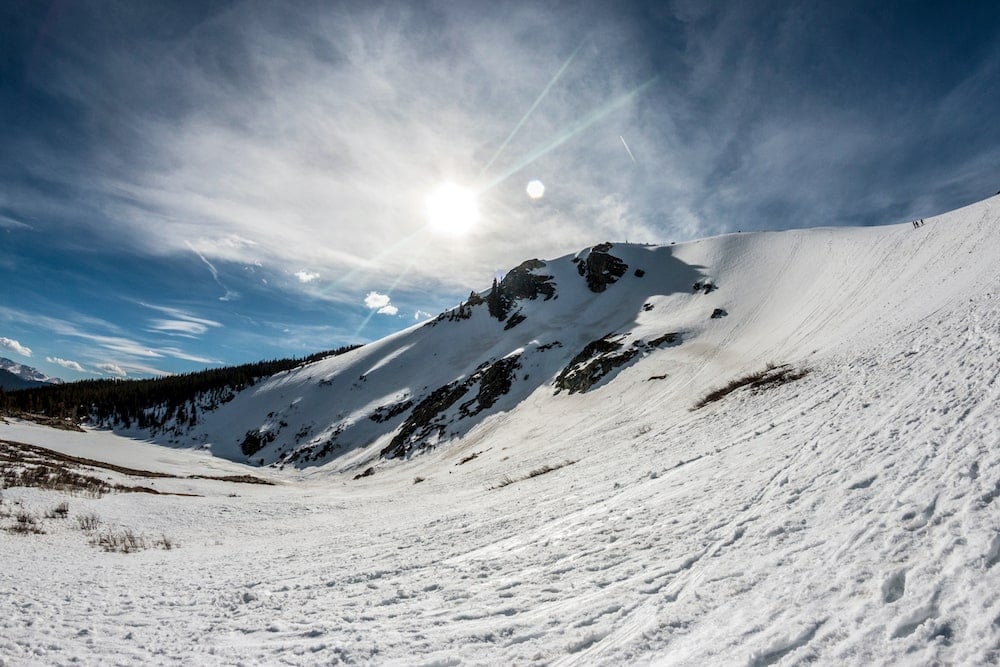
Why you should go: To visit one of the last remaining glaciers in Colorado.
- Nearest town: Idaho Springs
- Distance: 2.4 miles
- Difficulty: Easy
- Elevation gain: 1,030 feet
The hike to Saint Mary’s Glacier is via a relatively easy and generally well-traveled trail leading past Saint Mary’s Lake to the glacier. You’ll likely want to take your microspikes to travel this one.
When the route is packed out, it can get slippery, and when it isn’t, you’ll still want the traction for the route’s steep sections. It’s a quick hike, but you’ll want to spend a little time when you get there admiring the vistas.
If you’re lucky, you might even see a few skiers and snowboarders enjoying the slopes of the snowfield — it’s popular for making backcountry turns.
Related Read: 12 of the Best Airbnbs in Leadville, Colorado
4. Brainard Lake Snowshoe Trail
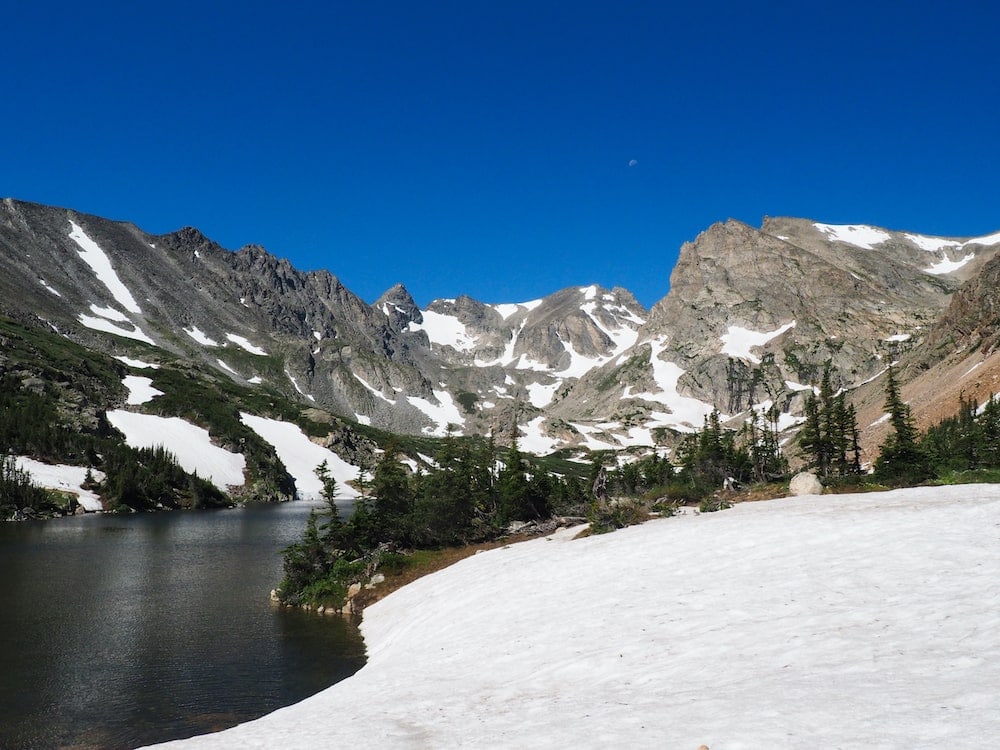
Why you should go: Easy hike near the Front Range with amazing views of the Indian Peaks Wilderness.
- Nearest town: Ward
- Distance: 4.8 miles
- Difficulty: Easy
- Elevation gain: 470 feet
This area is tremendously popular with the locals as it’s a relatively easy (not to mention gorgeous) drive from the Front Range to the recreation area. It lets flatlanders venture relatively safely into a winter alpine environment. The main road and campgrounds in the recreation area are closed in the winter, but there’s free parking at the lower lot.
There are many options for hiking in the Brainard Lake Recreation Area at various elevation levels, so bring the snowshoes. You’ll likely encounter plenty of other skiing and hiking enthusiasts. Just make sure you stick to the hiking trails or unplowed roads as a few trails are meant only for cross-country skiing.
A popular option is to take the Brainard Lake Snowshoe Trail to the lake, returning on the same route or along the main road. It’s typically covered in snow all winter, so definitely bring snowshoes if that’s your plan.
Related Read: 10 Best Hikes in Rocky Mountain National Park, Colorado
5. Quandary Peak Trail
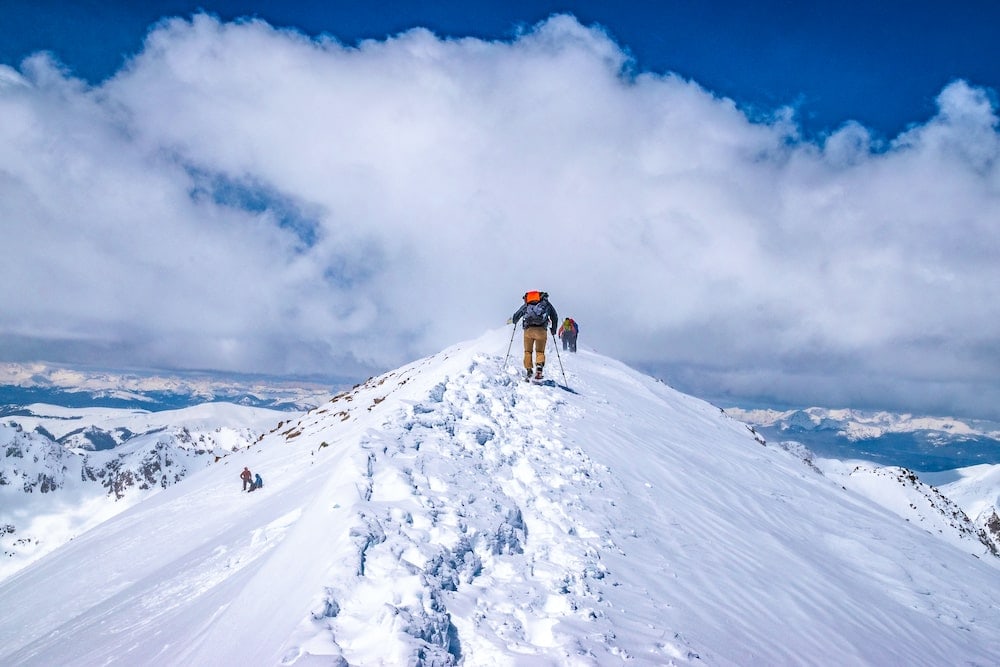
Why you should go: One of the most accessible (and easy) 14’ers in the winter.
- Nearest town: Breckenridge
- Distance: 6.4 miles
- Difficulty: Difficult
- Elevation gain: 3,200 feet
If you’re looking for somewhere a bit higher and harder for winter hiking in Colorado, Quandary Peak, just outside Breckenridge, is a smart choice. This hike has its risks, sure, but as far as winter 14’er summiting goes, the relatively low avalanche risk for this route makes it more manageable.
An easy-to-reach trailhead and a 3.2-mile hike to the summit make this seem like a simple trek, but remember that you’ll still be gaining more than 3,000 feet of elevation gain, topping out at 14,180 feet above sea level. Most winter days are quite windy above the treeline, so you can expect breezy conditions, cold temps, and wind-drifted snow. Bring a pack and consider wearing goggles if you don’t have large, protective sunglasses.
Related Read: 11 Easiest 14ers in Colorado for Newbies to the High Peaks
6. Mount Royal Trail
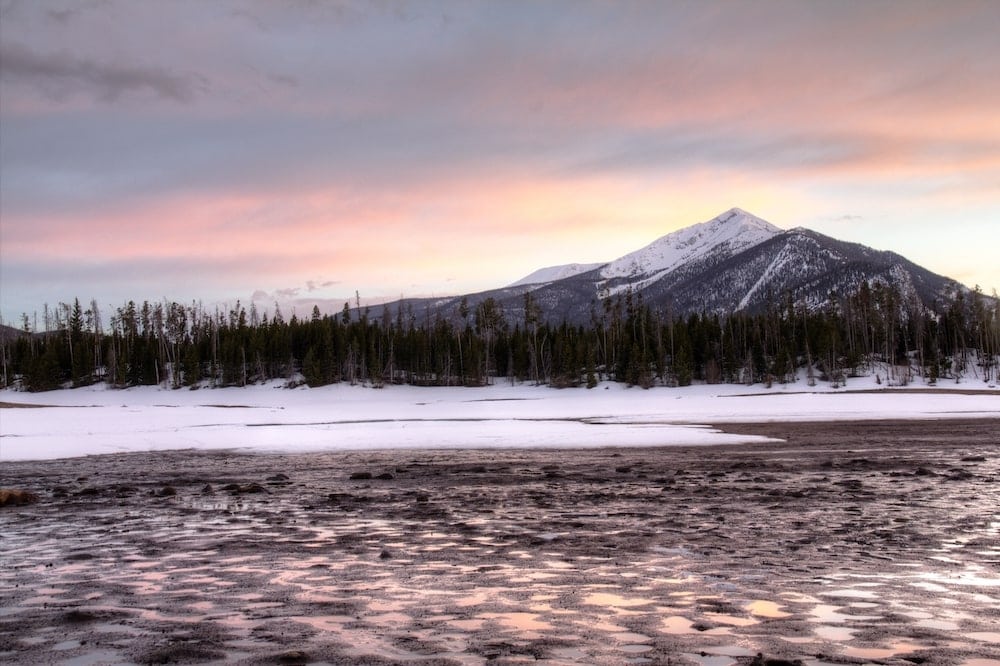
Why you should go: Short hike, great views, and a bit of protection from high-elevation winds.
- Nearest town: Frisco
- Distance: 3.2 miles
- Difficulty: Intermediate
- Elevation gain: 1,390 feet
Like Breckenridge, Frisco sits high in the mountains, making it a good jumping-off point for high altitude winter hikes in Colorado. Though the town can be bitterly cold, windy, and snowy in the winter, it doesn’t stop locals from getting out and enjoying the breadth of nearby trails. But you do have to be prepared and know what terrain you’re traversing to avoid avalanche danger. Luckily, there are quite a few options in Frisco that are relatively safe to explore in the winter.
One such hike on the edge of town is Mount Royal. The trail up is steep and bound to be snowy, so you’ll definitely want traction devices, but the views from the top are worth the effort. The summit overlooks the town and Lake Dillon, but you can wander behind the summit and see some pretty cool views of the interstate weaving up the canyon, too.
This hike is nice when it’s too windy to head above treeline, as the trees offer a little protection from the west winds.
Related Read: 10 Best Things to Do in Leadville, Colorado
7. Strawberry Park Hot Springs Trail
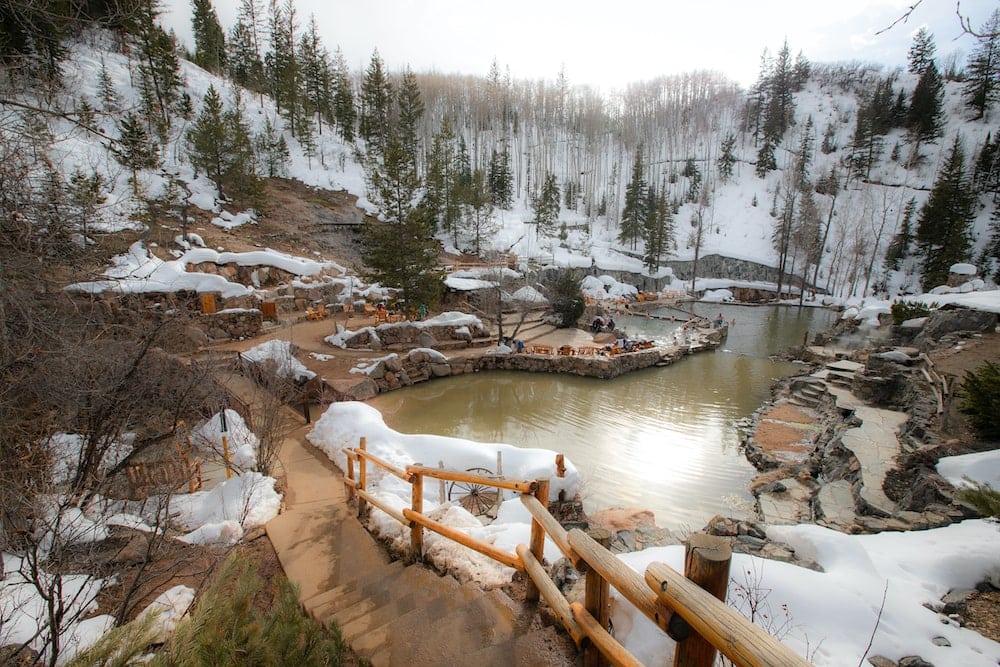
Why you should go: A magically snowy hike through a forest to a gorgeous hot spring.
- Nearest town: Steamboat Springs
- Distance: 6.2 miles
- Difficulty: Intermediate
- Elevation gain: 900 feet
What could be more rewarding than a long soak in a hot spring after a chilly winter hike through the snow? Strawberry Park Hot Springs offers a remote and romantic atmosphere tucked into the forest above the town of Steamboat Springs.
Most people who visit these popular hot springs in Steamboat Springs either drive or take the shuttle. However, if you want a fun adventure, consider hiking to the back way to the hot spring. The trail is generally pretty gradual and do-able (though traction devices are sometimes helpful). There’s just one small, rocky section in the middle, but hey, it’s winter hiking in Colorado – nothing is too easy. You can always take the shuttle back if you don’t want to hike both ways.
Once you reach the hot spring, pay the entry fee and treat yourself to a long soak in the pools. It’s always magical in the winter, but it’s especially nice if there’s a but of light snow falling around you.
Related Read: 9 Natural Hot Springs in Colorado for Soaking Away Your Troubles
8. Window Rock at the Colorado National Monument
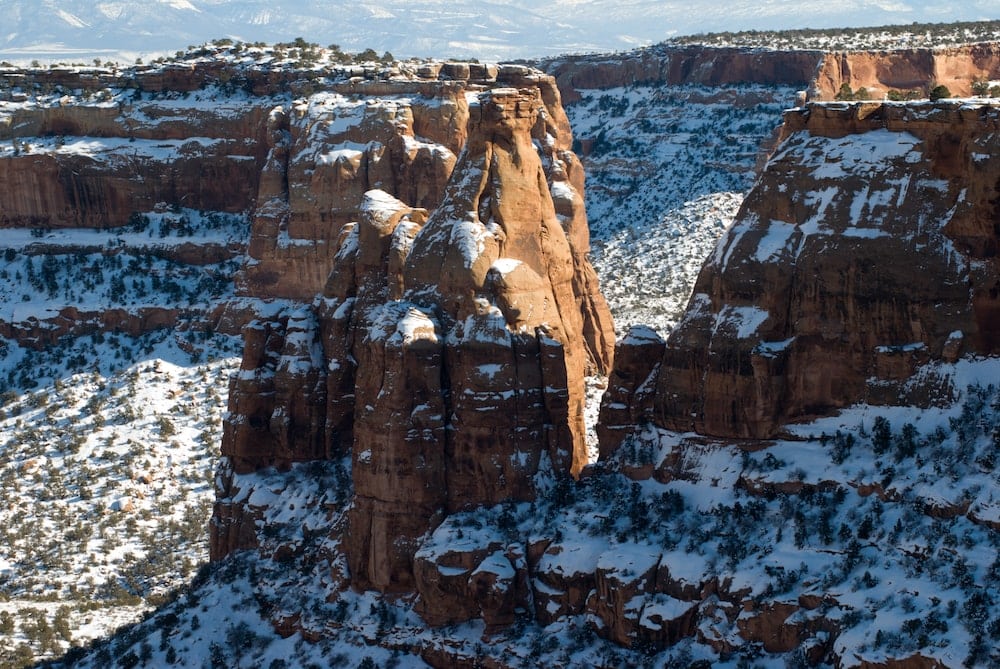
Why you should go: Family-friendly hike through snow-covered sandstone landscapes.
- Nearest town: Fruita
- Distance: 1.7 miles
- Difficulty: Easy
- Elevation gain: 180 feet
The western slope of Colorado is a fantastic place to be outside in the winter. Generally a bit drier and sometimes a tad warmer than the mountains or the Front Range, it’s a great place for winter hiking in Colorado, especially if you’re with hikers who may get easily fatigued by hiking at higher elevations.
The Colorado National Monument is open year-round (though the Rim Rock Road will close in poor conditions), making this a reliable spot to enjoy snowy desert landscapes. A great hike here is the Canyon Rim Trail to Window Rock, and it’s perfect for families since it’s relatively short and doesn’t have too much climbing.
The trails wind along canyon walls past expansive overlooks of the canyon and prominent monument features. A coating of snow draping the red sandstone adds a layer of depth to the views, so you may want to plan your hike for a day after some fresh flakes.
Related Read: The 10 Best Hikes Near Grand Junction, Colorado
9. Rattlesnake Canyon Arches Trail
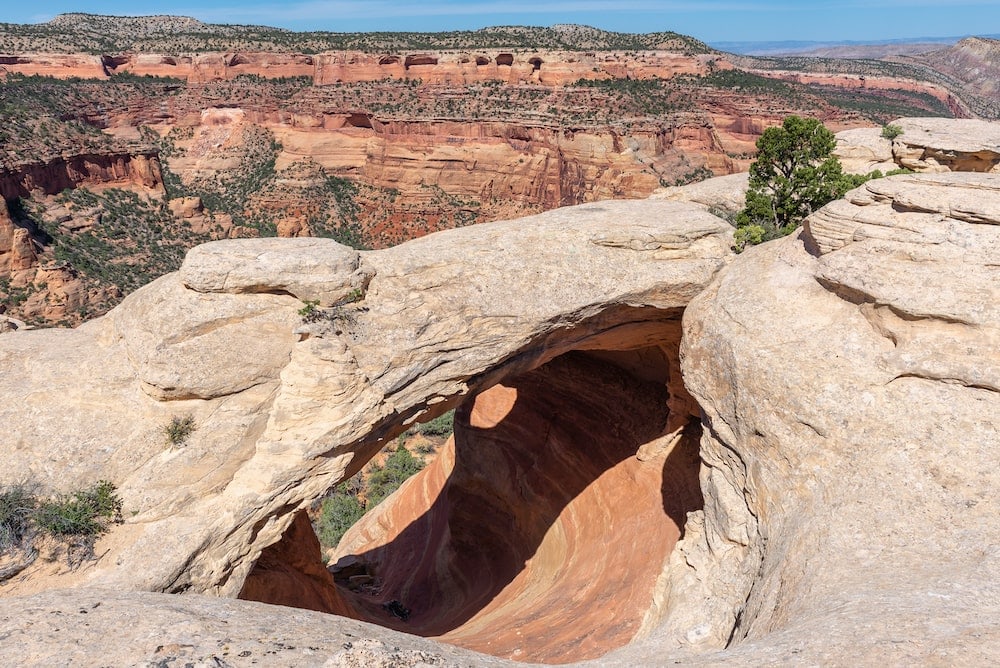
Why you should go: An epic trek into the Colorado desert to visit the greatest concentration of arches outside of Utah.
- Nearest town: Fruita
- Distance: 12.2 miles
- Difficulty: Difficult
- Elevation gain: 2,560 feet
Just west of Grand Junction is McInnis Canyon National Conservation Area, a massive plot of land managed by the Bureau of Land Management. The N.C.A. is home to an expansive network of trails, cultural sites, and natural resources.
The western slope can get quite hot in the summer, but its fantastic (and usually snow-free) in the winter. And the N.C.A. is home to two of Colorado’s best winter hikes.
The first is the Rattlesnake Canyon Arches Trail, a beautiful lollipop trail. The loop is about 12 miles, so make sure to start early as your daylight hours are fewer in the winter months.
The trail winds deep into the conservation area and ends at a loop with the largest concentration of arches outside of Utah. If you choose to head through the arch to continue the loop, it becomes a bit of a scramble and can be slick if there’s fresh snow. But it’s worth trying — you can always turn around and head back the way you came if it gets too dicey.
The second hike is the Devil’s Canyon D3 Loop, a moderate seven-mile hike that leads you deep into the canyon, below cliff walls, and feels incredibly remote despite its proximity to town.
Related Read: 9 Best Hiking & Outdoors Apps for iPhone and Android
10. Bridal Veil Falls
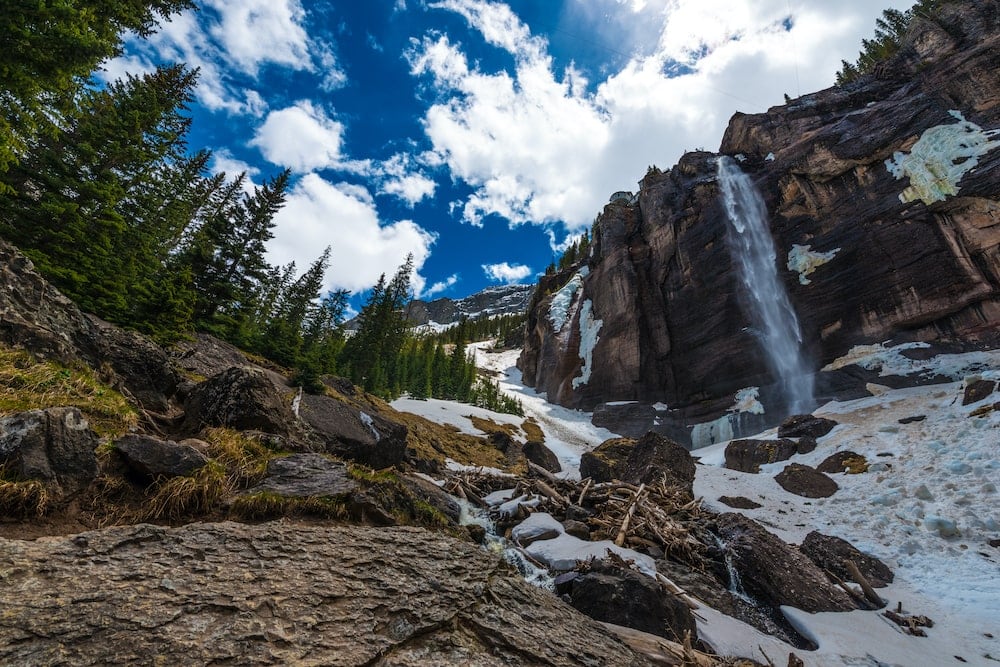
Why you should go: See massive Bridal Veil Falls against a snowy backdrop with ice along the rocks.
- Nearest town: Telluride
- Distance: 4.3 miles
- Difficulty: Intermediate
- Elevation gain: 1,320 feet
Telluride is an old mining town now primarily known for its epic ski resort. The Victorian-era town is tucked into a canyon surrounded by 13,000- to 14,000-foot-tall peaks. The craggy mountainscapes of San Juans are probably the view you’re envisioning when you think of Colorado.
As such, much of the skiing and hiking in Telluride is quite rugged and extreme. However, there are some more mellow winter hikes if you know where to look. One is Bridal Veil Falls, a great choice any time of year but especially nice for a winter hike in Colorado. Though the actual trail leads up to the 365-foot tall waterfall, in the winter, an easier option is to follow the snow-covered road. The views of (and from) the falls are breathtaking, and not just because of the elevation.
Another option in Telluride is the route to Bear Creek Falls via the Bear Creek Preserve Trail. This out-and-back hike is about five miles and offers a quiet, snowy hike to the likely frozen Bear Creek Falls. You can bring your doggo on this hike if he or she likes the snow, but it may be a little slippery (you’ll likely want your traction devices.)
Related Read: Rocky Mountain High: Colorado’s Best Waterfall Hikes
11. Purgatory Trail
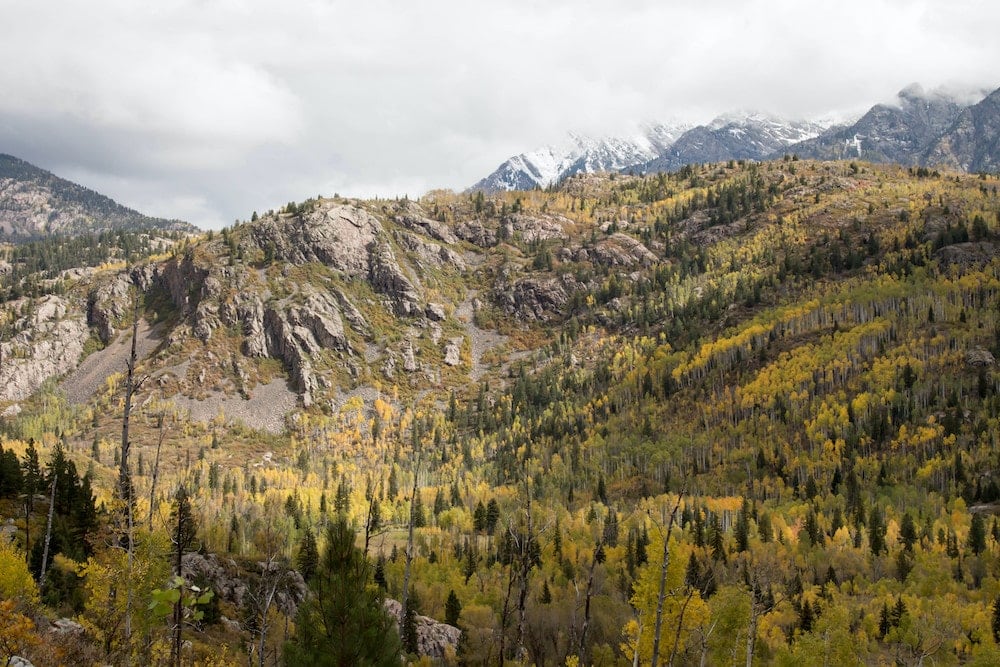
Why you should go: Pet-friendly trail with gentle, even gain just outside Durango.
- Nearest town: Durango
- Distance: 8.4 miles
- Difficulty: Intermediate
- Elevation gain: 1,800 feet
Tucked in southern Colorado, Durango is a hotbed of outdoor activity. Even in the winter, Durango boasts an extraordinary number of things to do from skiing to snowmobiling to sleigh rides. So it should come as no surprise that it’s a great spot for winter hiking, too.
One of the easiest and most pleasant adventures is the Purgatory Trail (also called the Purgatory Flats Trail) just north of town. The trail is generally mellow with even elevation gain, and it’s also open to dogs. But before getting started, make sure you know the profile: you’ll head downhill first and have most of the elevation gain on the return. The near and distant views of snow-capped mountains and alpine forests are a wonderful backdrop to a day spent playing outside, and if you bring your snowshoes, you’ll make quick work of the trail — on the way out, at least.
Find Your Next Colorado Adventure
Sign up for the Weekend Wanderer to join thousands of readers getting epic travel ideas every week.
Seen in: Colorado, Colorado Hiking, Hikes, Rockies, Winter

